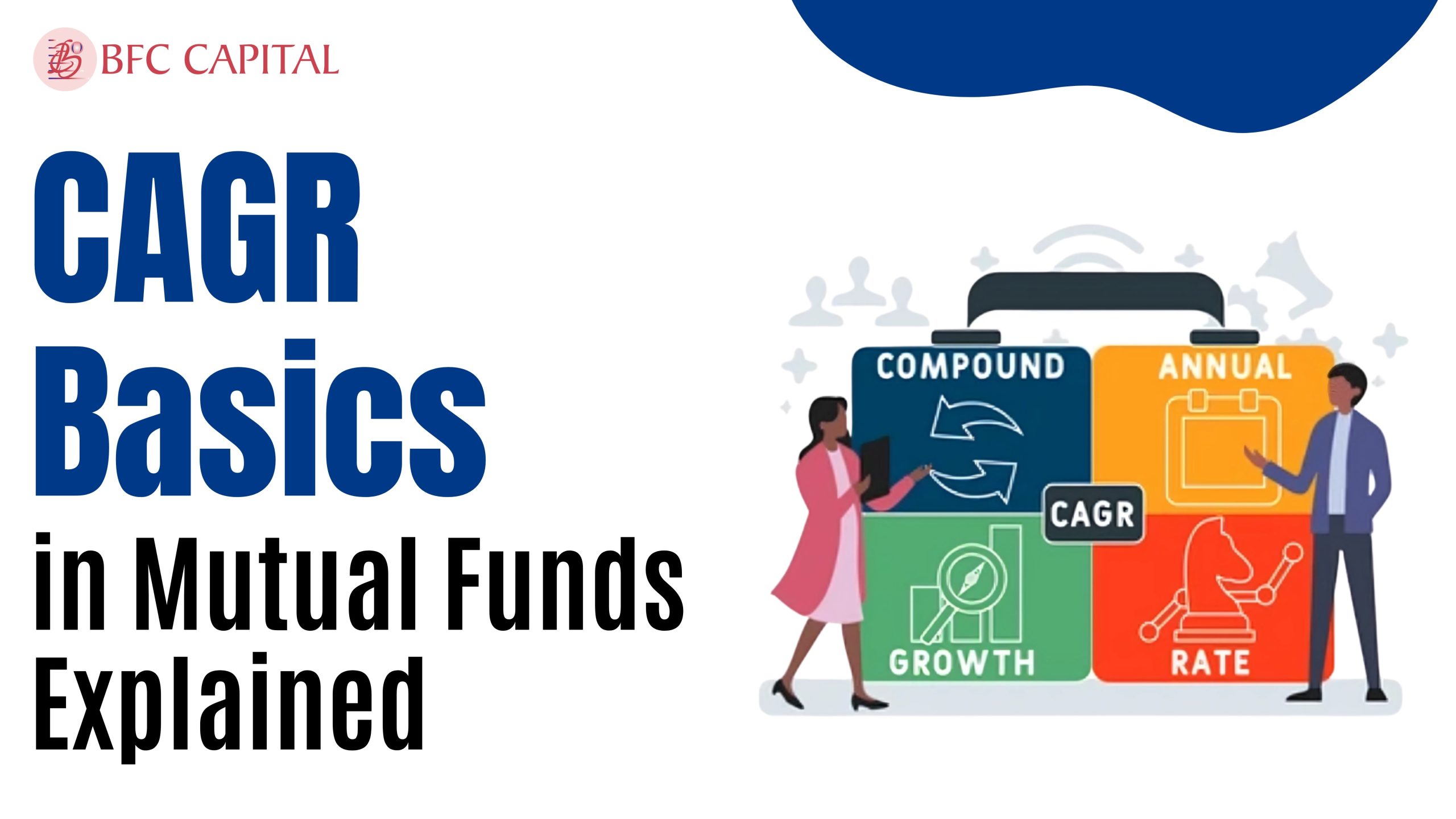
Have you wondered about weighing grocery items and always looking to maintain the right balance to make the most of it in one go? This thumb rule of weighing the right balance does wonders for you when tackling the two crucial investment strategies: SIPs (Systematic Investment Plans) and Buying on Dips.
SIP and Buying on Dips is a crucial part of stock market investment. Let’s begin with SIP. It means investing a certain amount of money through mutual funds or stocks regularly and getting returns. They maintain the right balance of slow and steady gets you long-term wealth.
However, buying on dips involves purchasing stocks when the market turns down, and investors aim to maximise on lower prices, which brings greater returns.
So, all the investors out there, ready your bags of investment strategy by choosing the right options. Keep reading to get on the way to choose better investment options.
Table of Contents
About SIP Systematic Investment Plan
SIPs are the greatest and most popular investment strategies that allow investors to invest some money regularly. This investment can usually be performed monthly, weekly, or daily. With SIPs, you gain an advantage in taking on wealth systematically and utilising rupee cost averaging. SIP allows investors to purchase mutual fund units at cost-effective prices and lesser units at higher prices by taking advantage of the rupee-cost averaging concept.
Pros
- Rupee-Cost Averaging: Rupee cost average is the leading investment strategy put into action by regular SIPs. The end cost of the units purchased is much less when investors invest more and jumps higher when they buy less.
- Consistency: Regular SIPs bring consistency to all SIP investors. Regularly investing a fixed amount prevents investors from acting contrary to market conditions or letting short-term fluctuations affect their decisions.
- Mitigating Market Volatility: Regular SIPs can help in fighting market volatility since their investments are extended over time. With its persistence in investing, investors don’t have to bear the risk of short-term fluctuations in the market.
- Generate long-term wealth: Regular SIP investment offers you the advantage of generating impressive and long-term wealth. The longer you keep investing money with a good fixed amount regularly, you will have a better chance to make significant money.
Cons
- Limited Timing Benefits: Regular SIPs limit investors by cutting down on bargains and downturns in markets. Well, purchasing assets during the market downfall can give you great long-term returns compared to those who purchase at a higher cost.
- Investing a Fixed Amount: Regular SIP calls for investing in a fixed amount. This restricts the investors from customizing the strategy where you need to capitalize on downfalls.
What is Buying On Dip?
Buying-on-dip investment strategies define the investment approach where investors patiently wait until the market gets to its feet or matures before increasing their positions. Hence, dipping prices come into play for investors when the market fluctuates, changes in economic conditions, or various other factors contribute to a dip in prices.
This strategy works for professional investors who can manage to take higher risks and have a deeper understanding of the market. There are times when professionals go through the challenges with buying on dip” options as it demands analyzing the market correctly.
Pros
- Making Use of Market Volatility: Investing in assets at cost-effective prices enables investors to enjoy gaining profit by making the most of the use of market volatility. When the market gets back to its position, investors who purchased during the downtime enjoy the finest returns.
- Flexibility and opportunism: Compared to regular SIPs, Buying on Dips benefits investors by allowing them the flexibility to make the required amendments to the investment strategy as the market demands. As a result, investors can make the most of the market downturns.
- High Returns: By investing in the assets at a discounted rate, investors enjoy higher returns. It revolves around the rule of buying low and selling high.
- Involve Market Timing Skills: It’s all about the game of right execution, where you need to maintain accuracy with the identification of undervalued assets and market timing skills. Here comes the chance of mistakes that lead to losses or suboptimal returns.
Cons
- Market Timing Risks: It brings the challenge of predicting the market, which sometimes leads to making impulsive decisions out of fear or greed. Regarding making informed investment decisions, investors might also go through the challenges of staying disciplined.
- Market Uncertainty: Determining undervalued assets and estimating the end of the market insights are inherently difficult. However, there comes the risk of investing in declining assets or mistiming the market.
Regular SIPs vs Buying on Dips with Examples
Investing in the stock market is made convenient with various investment approaches in place. SIP is among the popular investment strategies, and other investment strategies are SIPs.
Here, it is worth noting that Systematic Investment Plan is a disciplined approach. By averaging out investment costs over time, it reduces investment risk. The difference is that if you “buy on dips”, you will benefit from lower prices for higher returns. Both methods aim to build wealth in the end, but they operate differently and are based on different principles.
Here are some of the best real-time scenarios that clearly explain the difference between SIP and buying on Dip.
1. Buying only on dips
Mr Rahul decides to invest Rs. 5,000 every time the market falls by 2%. He continued to process consistently for 10 years and invested Rs. 6,05,000. Here is how the metrics look for buying only on dips:
| Total investment | Value of investment | XIRR (Extended Internal Rate of Return) |
| Rs 6,05,000 | Rs 11,36,360 | 12.95% |
2. Regular monthly SIPs
Now comes the real-time scenario for regular SIP, where investors invest a certain amount consistently every month. Let’s say Rohit, the financial advisor, takes the approach of SIP to build wealth, and he continues to invest regular monthly SIPs of Rs. 5,000. He continued the same process for 10 years and invested a total of Rs 6,00,000. Here is how metrics look like to determine returns:
| Total investment | Value of investment | XIRR (Extended Internal Rate of Return) |
| Rs 6,00,000 | Rs 10,78,737 | 12.95% |
SIP vs Buying on DIP: Which is one to choose
There are many factors to consider when choosing a SIP or DIP strategy, such as risk tolerance and market knowledge. Let’s learn when to choose SIP over DIP so you can make a more informed decision:
When should SIPs be preferred?
SIPs are the perfect choice for those investors who can invest consistently some fixed amount depending on the plan every month without any break. The market changes will not impact regular investment, so you can rest assured.
If you continue to stay disciplined with the Systematic Investment Plan investment, you can reach the following long-term financial goals:
- Investing in retirement
- Education of a child
- Investing in an emergency fund
When should you buy a dip?
Buy-on-dip is the perfect choice for investors who understand market fluctuations and risks and are capable of overseeing higher returns. This strategy is for investors who are looking to make higher returns when the market is down and has the capability to carry great risk.
The key is to understand when prices might recover and increase in value, not just purchase when they’re low.
Conclusion
SIP and DIP both offer advantages and risks, with the motive of giving investors the best opportunities to generate significant revenue. SIP is a great choice for investors who can commit to consistent investment regularly. However, dip-buying is right for investors with high risk-taking capabilities. So, make your choice wisely and choose the investment approach that can exceed your investment goals.
Please share your thoughts on this post by leaving a reply in the comments section. Also, check out our recent post on: “Simple Interest: Meaning, Formula, and How to Calculate?“
To learn more about mutual funds, contact us via Phone, WhatsApp, Email, or visit our Website. Additionally, you can download the Prodigy Pro app to start investing today!
Disclaimer – This article is for educational purposes only and by no means intends to substitute expert guidance. Mutual fund investments are subject to market risks. Please read the scheme-related document carefully before investing.

Assistant Vice President – Research & Analysis
Akash Gupta heads the Research & Analysis department at BFC CAPITAL, where he combines in-depth market insights with strategic analysis. He holds multiple certifications, including:
- NISM-Series-XIII: Common Derivatives Certification
- NISM-Series-VIII: Equity Derivatives Certification
- NISM-Series-XXI-A: Portfolio Management Services Certification
- IRDAI Certification
With his expertise in equity, derivatives, and portfolio management, Akash plays a key role in providing research-backed strategies and actionable insights to help clients navigate the investment landscape.







